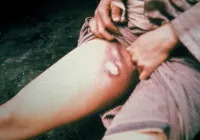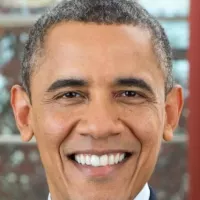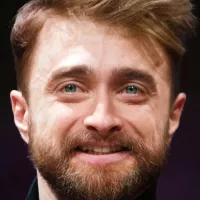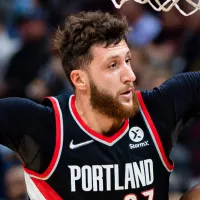Madagascar is an island country located in the Indian Ocean, off the southeastern coast of Africa. It is the fourth-largest island in the world, second-largest island country, and 46th-largest country overall. Antananarivo is its capital and largest city.
1905: Malagasikara usage by natives
In 1905, Charles Basset wrote that Malagasikara was the way the island is referred to by its natives, who emphasized that they were Malagasy, and not Madagasy.
1927: Major demonstrations in Antananarivo
In 1927, major demonstrations were organized in Antananarivo, notably on the initiative of the communist activist François Vittori, who was imprisoned as a result.
1939: Dissolution of organizations
In 1939, all the organizations were dissolved by the administration of the colony, which opted for the Vichy regime.
1947: MDRM accused of insurrection
In 1947, the MDRM was accused by the colonial regime of being at the origin of the insurrection and was pursued by violent repression.
1947: Malagasy Uprising
In 1947, the Malagasy Uprising occurred, galvanizing the growing independence movement.
1956: Establishment of reformed institutions
In 1956, France established reformed institutions in Madagascar under the Loi Cadre (Overseas Reform Act).
October 1958: Proclamation of the Malagasy Republic
In October 1958, the Malagasy Republic was proclaimed as an autonomous state within the French Community.
1959: Adoption of a constitution
In 1959, a constitution was adopted in Madagascar.
June 1960: Full independence
In June 1960, Madagascar gained full independence.
June 1960: Independence from France
Madagascar gained its independence on 26 June 1960.
September 1960: United Nations membership
Madagascar became a member state of the United Nations on 20 September 1960, shortly after gaining its independence.
1960: Capital after independence
After regaining independence in 1960, Antananarivo remained the capital of Madagascar.
1960: Independence gained from France
In 1960, Madagascar gained independence from France after being annexed by them in 1897.
1960: Start of the First Republic
In 1960, the First Republic began in Madagascar under President Philibert Tsiranana.
1960: Restoration of independence of the Malagasy armed forces
The political independence and sovereignty of the Malagasy armed forces, which comprises an army, navy and air force, was restored with independence from France in 1960.
1963: Founding member of the Organisation of African Unity
Madagascar was a founding member of the Organisation of African Unity, which was established in 1963.
1964: First appearance at the Olympic Games
Madagascar sent its first competitors to the Olympic Games in 1964.
1972: Overthrow of Tsiranana's administration
In 1972, farmer and student protests overturned President Tsiranana's administration.
1973: Oil crisis economic pressures
In 1973, economic pressures stemming from the oil crisis impacted Madagascar.
1975: Ramanantsoa stepped down
In 1975, Gabriel Ramanantsoa stepped down due to low public approval, Colonel Richard Ratsimandrava was appointed to succeed him, but was assassinated six days into his tenure.
1975: Start of Ratsiraka's rule
Ratsiraka remained in power from 1975 to 2001 and failed to achieve significant improvements in education throughout his tenure.
1976: Instation of mandatory national armed or civil service
Under the socialist Second Republic, Admiral Didier Ratsiraka instated mandatory national armed or civil service for all young citizens regardless of sex, a policy that remained in effect from 1976 to 1991.
1979: Bankruptcy of Madagascar
By 1979, Madagascar had become completely bankrupt.
1990: Malagasy fertility rate
In 1990, the Malagasy fertility rate was 6.3 children per woman, but this declined to 4.6 in 2009. In 1990, the maternal mortality rate was 484.4 per 100,000 births.
1991: End of mandatory national service
Admiral Didier Ratsiraka's policy of mandatory national armed or civil service for all young citizens regardless of sex ended in 1991.
1991: Presidential guards opened fire on unarmed protesters
In 1991, presidential guards opened fire on unarmed protesters during a rally, leading to a transitional government.
1992: Brief presidency of Albert Zafy
From 1992 to 1996, Albert Zafy served as president of Madagascar.
1992: Presidential elections and start of Third Republic
In 1992, Albert Zafy won the presidential elections and inaugurated the Third Republic.
1992: Constitutional democracy established
In 1992, Madagascar became governed as a constitutional democracy.
1993: Zafy becomes president
In 1993, Albert Zafy assumed the role of president.
1993: End of the Second Republic
In 1993, the Second Republic ended, marking the end of Didier Ratsiraka's tenure.
1996: Increased educational access
As a result of increased educational access, enrollment rates more than doubled between 1996 and 2006.
1996: End of Albert Zafy's presidency
From 1992 to 1996, Albert Zafy served as president of Madagascar, Ratsiraka remained in power from 1975 to 2001 and failed to achieve significant improvements in education throughout his tenure.
1996: Impeachment of Zafy and return of Ratsiraka
In 1996, Zafy was impeached, and Ratsiraka was voted back into power.
2000: Possible visits by foragers
Around 2000 BCE, Madagascar was possibly visited by foragers.
2000: Lemur species described by zoologists
Between 2000 and 2008, 39 species of lemurs were described by zoologists.
2000: Ban on precious timber collection
From 2000 to 2009, then-President Marc Ravalomanana banned the collection of small quantities of precious timber from national parks.
2001: Military neutrality during political unrest
During the protracted standoff between incumbent Ratsiraka and challenger Marc Ravalomanana in the disputed 2001 presidential elections, the military refused to intervene in favor of either candidate.
2001: Post-election standoff
Following the 2001 presidential elections, the eight-month standoff between incumbent Ratsiraka and challenger Marc Ravalomanana cost Madagascar millions of dollars in lost tourism and trade revenue as well as damage to infrastructure.
2001: Contested presidential elections
In 2001, contested presidential elections between Marc Ravalomanana and Ratsiraka occurred.
2001: End of Ratsiraka's second term
In 2001, the end of Ratsiraka's second term.
2001: Dispute over presidential election results
Madagascar was not permitted to attend the first African Union summit because of a dispute over the results of the 2001 presidential election.
2002: Ravalomanana administration prioritizes education
Beginning in 2002, Education was prioritized under the Ravalomanana administration (2002–09), and is currently free and compulsory from ages 6 to 13.
2002: Standoff between supporters of Ravalomanana and Ratsiraka
In 2002, a seven-month standoff occurred between supporters of Ravalomanana and Ratsiraka following the contested 2001 elections.
2002: Dissolution of the Organisation of African Unity
The Organisation of African Unity, of which Madagascar was a founding member, was dissolved in 2002.
July 2003: Rejoining the African Union
Madagascar rejoined the African Union in July 2003 after a 14-month hiatus.
2003: Announcement of the Durban Vision
In 2003, Ravalomanana announced the Durban Vision, an initiative to more than triple the island's protected natural areas to over 60,000 km (23,000 sq mi) or 10% of Madagascar's land surface.
2004: Cyclone Gafilo
In 2004, Cyclone Gafilo became the strongest cyclone ever recorded to hit Madagascar. The storm killed 172 people, left 214,260 homeless and caused more than US$250 million in damage.
2004: Creation of BIANCO
Ravalomanana's 2004 creation of BIANCO, an anti-corruption bureau, resulted in reduced corruption among Antananarivo's lower-level bureaucrats in particular.
2006: Increased educational access
As a result of increased educational access, enrollment rates more than doubled between 1996 and 2006.
2007: Rainforests of the Atsinanana declared a World Heritage Site
In 2007 six of the national parks (Marojejy, Masoala, Ranomafana, Zahamena, Andohahela and Andringitra) were declared a joint World Heritage Site under the name Rainforests of the Atsinanana.
2008: Tourist visits
An estimated 365,000 tourists visited Madagascar in 2008.
2008: Lemur species described by zoologists
Between 2000 and 2008, 39 species of lemurs were described by zoologists.
2008: Zafimaniry woodworking traditions inscribed on UNESCO list
In 2008, the decorative and functional woodworking traditions of the Zafimaniry people of the central highlands was inscribed on UNESCO's list of Intangible Cultural Heritage.
2008: Maternal mortality rate
In 2008, the maternal mortality rate was 373.1 per 100,000 births. This is in comparison to 440 per 100,000 births in 2010 and 484.4 in 1990.
January 2009: Re-authorization of precious timber collection
In January 2009, the collection of small quantities of precious timber from national parks, which had been banned by President Marc Ravalomanana from 2000 to 2009, was re-authorized. It was dramatically intensified under the administration of Andry Rajoelina to offset cuts in donor support following Ravalomanana's ousting.
March 2009: Suspension by the African Union
In March 2009, Madagascar was suspended by the African Union following the unconstitutional transfer of executive power to Rajoelina.
March 2009: Ravalomanana pushed from power
In March 2009, Ravalomanana was pushed from power, and Rajoelina was declared President of the High Transitional Authority.
2009: Dire consequences for wildlife
A July 2012 assessment found that the exploitation of natural resources since 2009 has had dire consequences for the island's wildlife: 90% of lemur species were found to be threatened with extinction, the highest proportion of any mammalian group.
2009: Impact of budget cuts on the national police force
Budget cuts since 2009 have severely impacted the national police force, producing a steep increase in criminal activity in recent years.
2009: Hosting rights for the FIBA Africa Championship for Women
In 2009, Antananarivo gained the hosting rights for the FIBA Africa Championship for Women.
2009: Political crisis and military coup
In 2009, Madagascar experienced a political crisis and military coup.
2009: Army defection to Rajoelina's side
In 2009, a segment of the army defected to the side of Andry Rajoelina, then-mayor of Antananarivo, in support of his attempt to force President Ravalomanana from power.
2009: Malagasy fertility rate
In 2009, the Malagasy fertility rate was 4.6 children per woman, declining from 6.3 in 1990. Adult life expectancy in 2009 was 63 years for men and 67 years for women.
2009: Violent protests led by Andry Rajoelina
In early 2009, a series of protests led by Andry Rajoelina against Ravalomanana became violent, with more than 170 people killed.
2010: Tourist visits
In 2010 180,000 tourists visited Madagascar.
2010: Adoption of a new constitution
In 2010, a new constitution was adopted by referendum, establishing a Fourth Republic.
2010: End of the Third Republic
In 2010, the Third Republic ended.
2010: Maternal mortality rate
In 2010, the maternal mortality rate was 440 per 100,000 births, compared to 373.1 in 2008 and 484.4 in 1990, indicating a decline in perinatal care following the 2009 coup.
2011: Areas protected by the state
As of 2011, areas protected by the state included five Strict Nature Reserves (Réserves Naturelles Intégrales), 21 Wildlife Reserves (Réserves Spéciales) and 21 National Parks (Parcs Nationaux).
2011: Hosting rights for the FIBA Africa Championship
In 2011, Antananarivo gained the hosting rights for the FIBA Africa Championship.
2011: Teen pregnancy and infant mortality rates
In 2011, teen pregnancy rates were 14.8%, which is much higher than the African average. The infant mortality rate in 2011 was 41 per 1,000 births, with an under-five mortality rate at 61 per 1,000 births.
2011: Scouting Membership
In 2011, the scouting membership in Madagascar was estimated at 14,905.
2011: Share of agriculture in GDP
The agriculture sector constituted 29% of Malagasy GDP in 2011, while manufacturing formed 15% of GDP.
July 2012: Assessment of natural resource exploitation
A July 2012 assessment found that the exploitation of natural resources since 2009 has had dire consequences for the island's wildlife: 90% of lemur species were found to be threatened with extinction, the highest proportion of any mammalian group.
2012: Lemur species count
As of 2012, there were officially 103 species and subspecies of lemur.
2013: Hosting rights for the FIBA Africa Under-16 Championship
In 2013, Antananarivo gained the hosting rights for the FIBA Africa Under-16 Championship.
2013: Rajaonarimampianina winner of presidential election
In 2013, Hery Rajaonarimampianina was declared the winner of the presidential election.
January 2014: Restoration of constitutional governance
In January 2014, constitutional governance was restored in Madagascar, marking the transition towards the fourth and current republic.
2014: Discovery of the Asian common toad
Following the 2014 discovery in Madagascar of the Asian common toad, researchers warned the toad could "wreak havoc on the country's unique fauna."
2014: Hosting rights for the FIBA Africa Under-18 Championship
In 2014, Antananarivo gained the hosting rights for the FIBA Africa Under-18 Championship.
2014: Outbreak of the bubonic and pneumonic plague
In 2014, Madagascar had outbreaks of the bubonic plague and pneumonic plague resulting in 263 confirmed cases and 71 deaths.
2014: Public expenditure on education
In 2014, public expenditure on education was 2.8% of GDP.
2015: Hosting rights for the FIBA Africa Under-16 Championship for Women
In 2015, Antananarivo gained the hosting rights for the FIBA Africa Under-16 Championship for Women.
2015: Comparison of tourist increase
In 2016, 293,000 tourists landed in the African island with an increase of 20% compared to 2015.
2015: GDP estimate
Madagascar's GDP in 2015 was estimated at US$9.98 billion, with a per capita GDP of $411.82.
2015: Start of the Madagascar Country Programme
Starting in 2015, under the direction of and with assistance from the UN, the World Food Programme started the Madagascar Country Programme with the two main goals of long-term development and reconstruction efforts, and addressing the food insecurity issues in the southern regions of Madagascar.
2016: Average growth rate expectation
During 2011–15, the average growth rate was 2.6% but was expected to have reached 4.1% in 2016, due to public works programs and a growth of the service sector.
2016: Tourist arrivals increase
In 2016, 293,000 tourists landed in the African island with an increase of 20% compared to 2015.
January 2017: Deployment of police officers in Haiti
As of January 2017, 34 police officers from Madagascar were deployed in Haiti as part of the United Nations Stabilisation Mission in Haiti.
2017: Tourism goal
For 2017 Madagascar has the goal of reaching 366,000 visitors.
2017: Outbreak of the bubonic and pneumonic plague
In 2017, Madagascar had outbreaks of the bubonic plague and pneumonic plague resulting in 2575 cases and 221 deaths.
2017: Capital's population in 2017
In 2017, the capital's population was estimated at 1,391,433 inhabitants.
2018: Government estimate for tourism
For 2018 government estimates expect to reach 500,000 annual tourists.
2018: Presidential election
In 2018, the presidential election's first round was held on November 7, and the second round on December 10. Rajoelina won the second round, while Ravalomana did not accept the results due to fraud allegations, and Rajaonarimampianina had modest support.
2018: Undernourishment and hunger rates
In 2018, undernourishment and hunger rates in Madagascar were at 42%.
January 2019: Rajoelina declared President
In January 2019, the High Constitutional Court declared Rajoelina as the winner of the elections and the new president.
2019: Measles Outbreak
In 2019, Madagascar had a measles outbreak, resulting in 118,000 cases and 1,688 deaths.
2019: Madagascar's national 3x3 basketball team won the gold medal
In 2019, Madagascar's national 3x3 basketball team won the gold medal at the African Games.
2019: Rajoelina's party wins parliamentary elections
In 2019, Rajoelina's party won an absolute majority in the National Assembly during the parliamentary elections, securing 84 of the 151 seats.
2020: COVID-19 pandemic
In 2020, Madagascar was affected by the COVID-19 pandemic.
2021: Multidimensional poverty
According to the United Nations Development Programme, as of 2021, 68.4% of the population is multidimensionally poor.
2021: Beginning of the Madagascar famine
Mid-2021 marked the beginning of the 2021–2022 Madagascar famine which, due to a severe drought, caused hundreds of thousands of people to face food insecurity and over one million people were on the verge of a famine.
2022: Climate change adaptation costs
A 2022 analysis found that Madagascar, to adapt to and avert the environmental consequences of climate change, is going to have to spend 15% of its GDP.
2022: Beginning of the Madagascar famine
Mid-2021 marked the beginning of the 2021–2022 Madagascar famine which, due to a severe drought, caused hundreds of thousands of people to face food insecurity and over one million people were on the verge of a famine.
November 2023: Rajoelina re-elected as president
In November 2023, Rajoelina was re-elected to another term with 58.95% of the vote in the first round of the election amidst an opposition boycott and a controversy about his acquisition of French citizenship and subsequent eligibility. Turnout was 46.36%, the lowest in a presidential election in the country's history.
2023: Threatened mammal species study
A 2023 study published in Nature Communications found that 120 of the 219 mammal species only found on Madagascar are threatened with extinction.
Mentioned in this timeline

Basketball is a team sport played on a rectangular court...
Africa is the second-largest and second-most populous continent comprising of...
Australia officially the Commonwealth of Australia encompasses the Australian mainland...

Measles also known as morbilli or rubeola is a highly...
France officially the French Republic is primarily located in Western...

Bubonic plague caused by Yersinia pestis manifests - days post-exposure...
Trending

1 month ago Michelle Obama: America 'not ready' for a woman president, cites sexism concerns.
1 month ago Priah Ferguson discusses girlhood, growth, Stranger Things goodbye, and Erica spinoff possibilities.

5 months ago Daniel Radcliffe's Post-Potter Roles & HBO's New Harry Potter Series: Navigating Controversy
8 months ago Jalen Brunson Praises Ausar Thompson; Knicks Stars Acknowledge Pistons' Grit in Series.

5 months ago Clippers provide update on Kawhi Leonard's condition after injury struggles, future plans.

Jusuf Nurki is a Bosnian professional basketball player currently playing for the Utah Jazz in the NBA Drafted th overall...
Popular

XXXTentacion born Jahseh Dwayne Ricardo Onfroy was a controversial yet...

Ben Shapiro is a prominent American conservative political commentator media...

Candace Owens is an American conservative political commentator and author...

William Franklin Graham III commonly known as Franklin Graham is...
The Kennedy Center Honors are annual awards recognizing individuals and...

Stranger Things created by the Duffer Brothers is a popular...